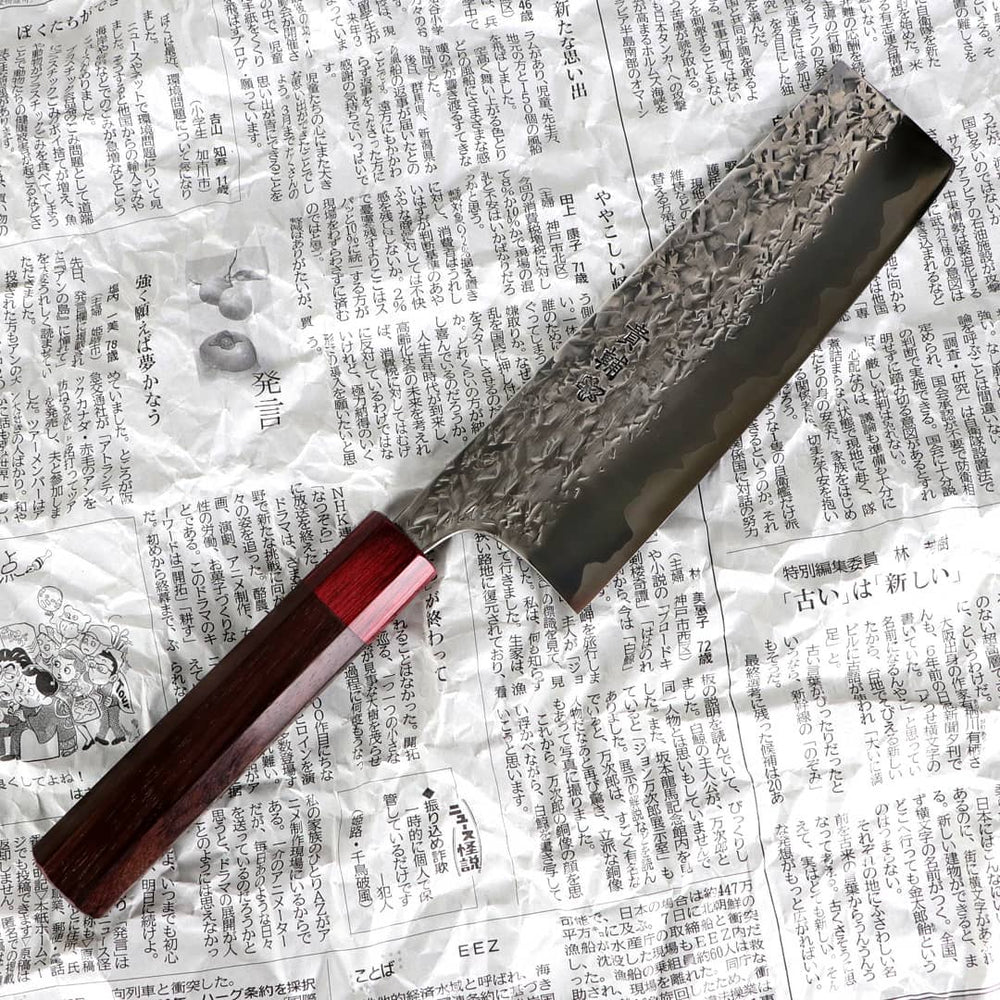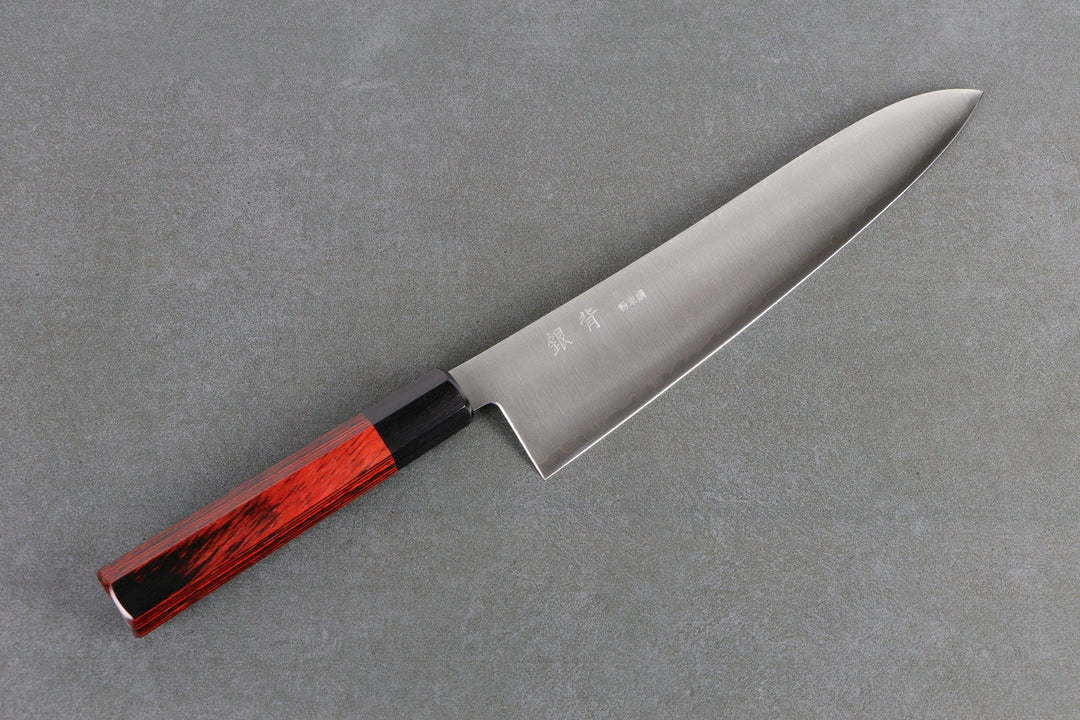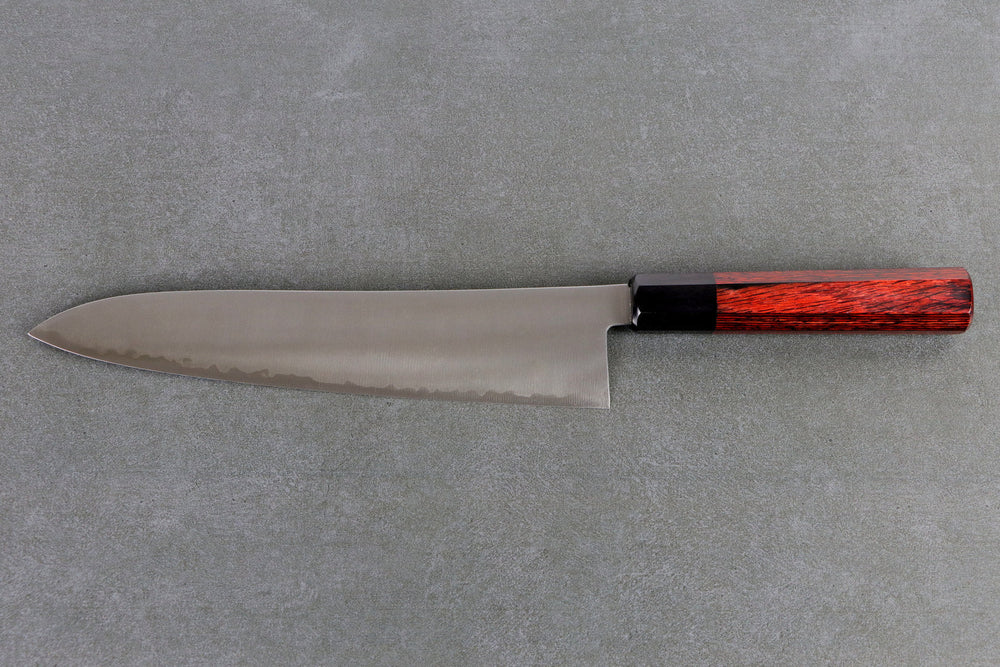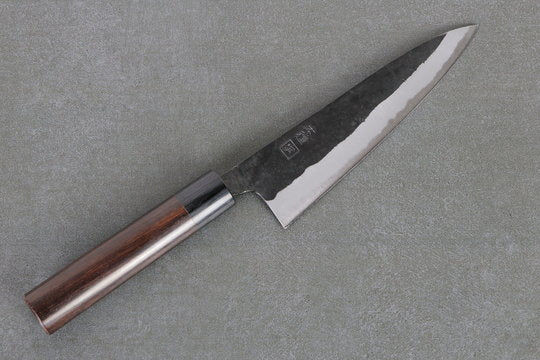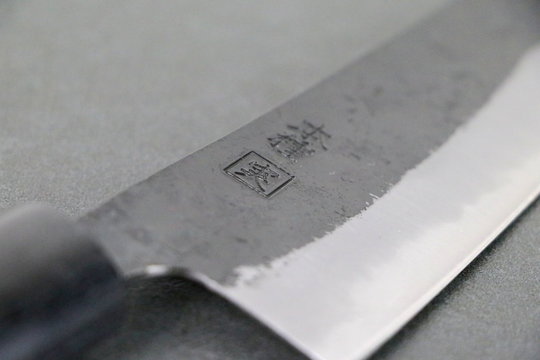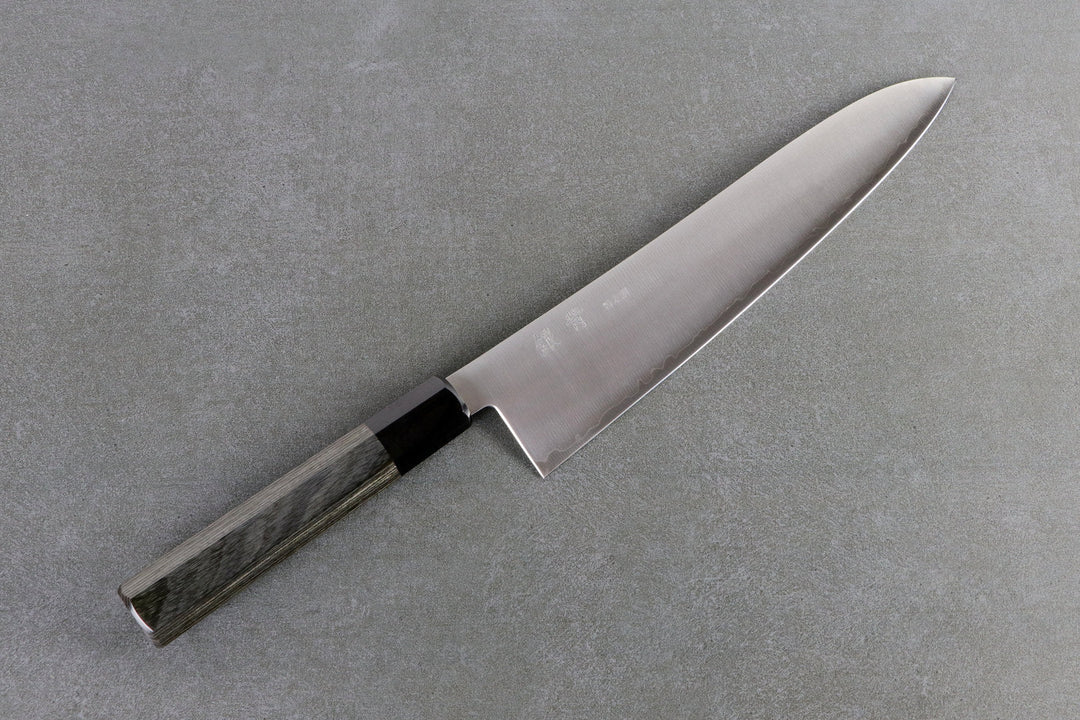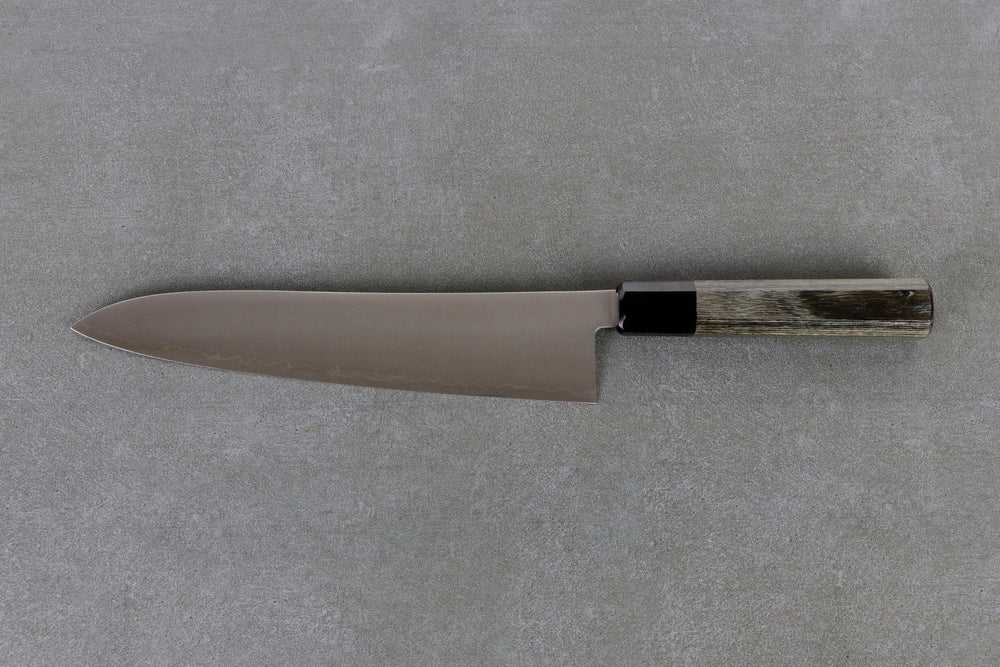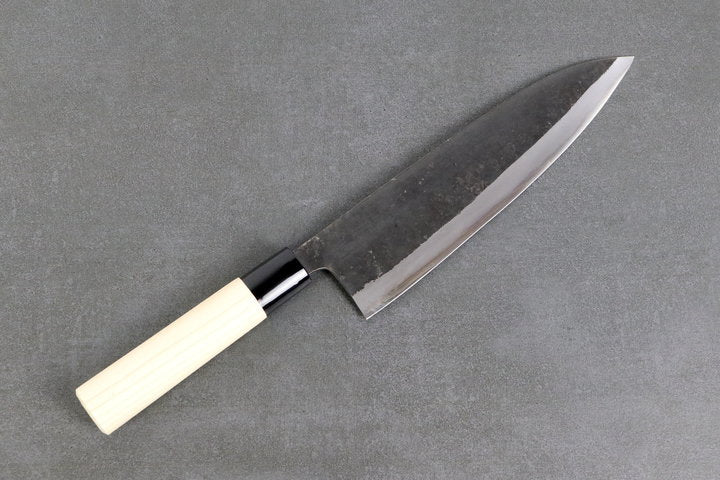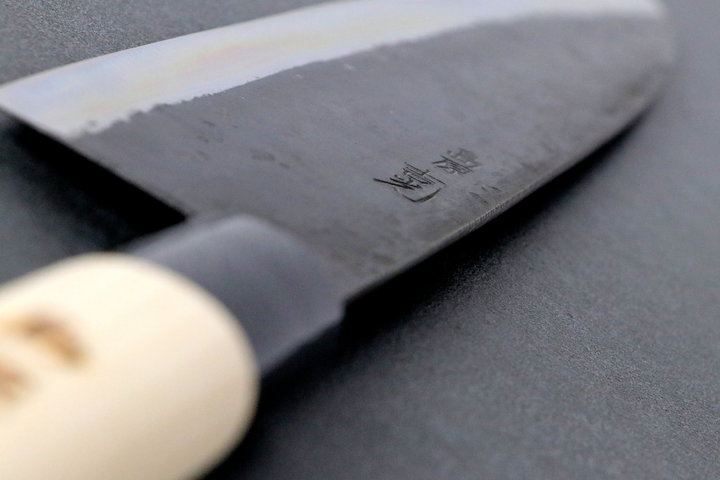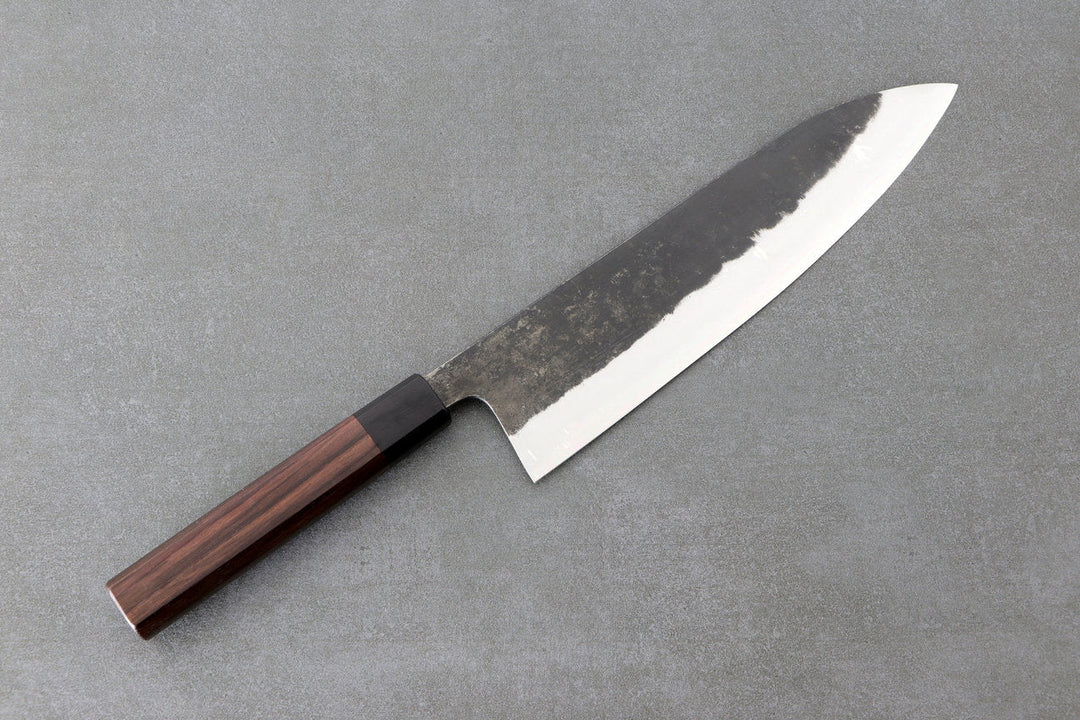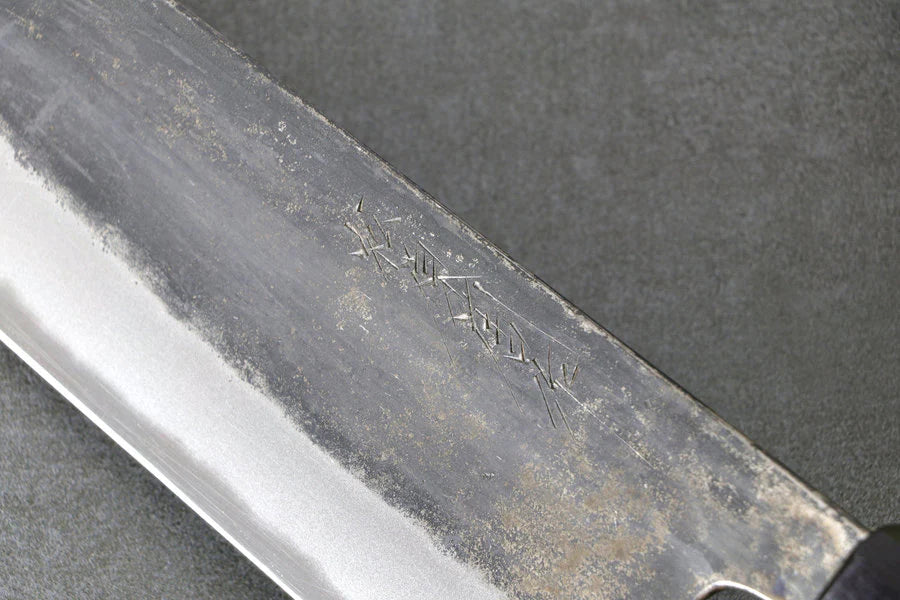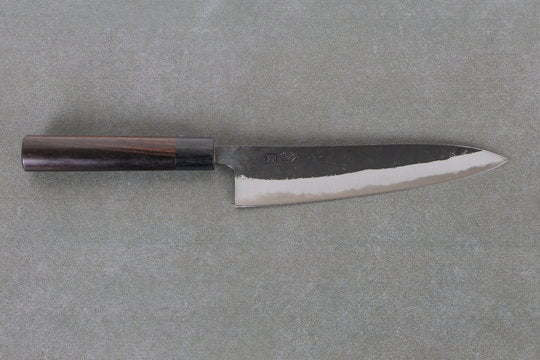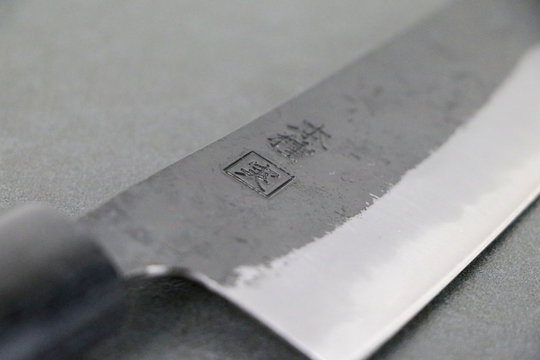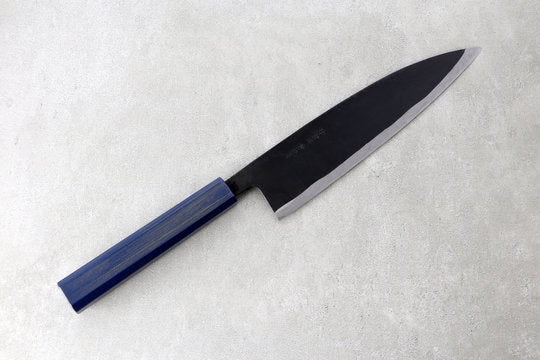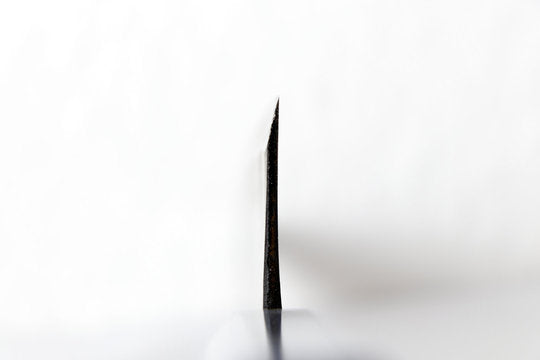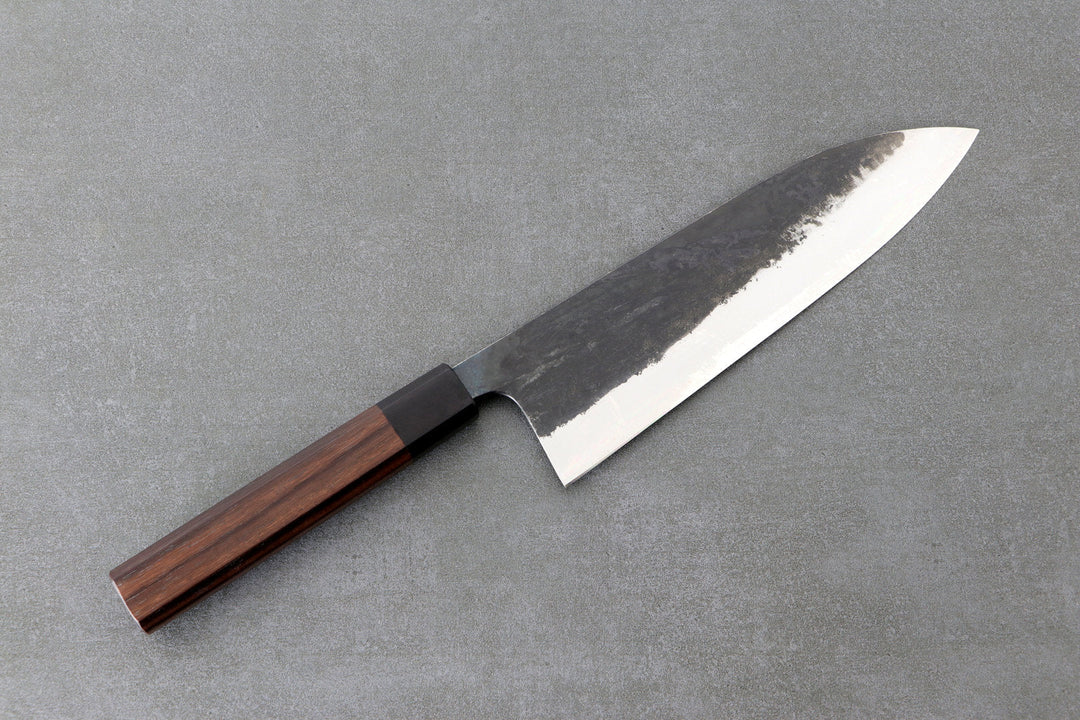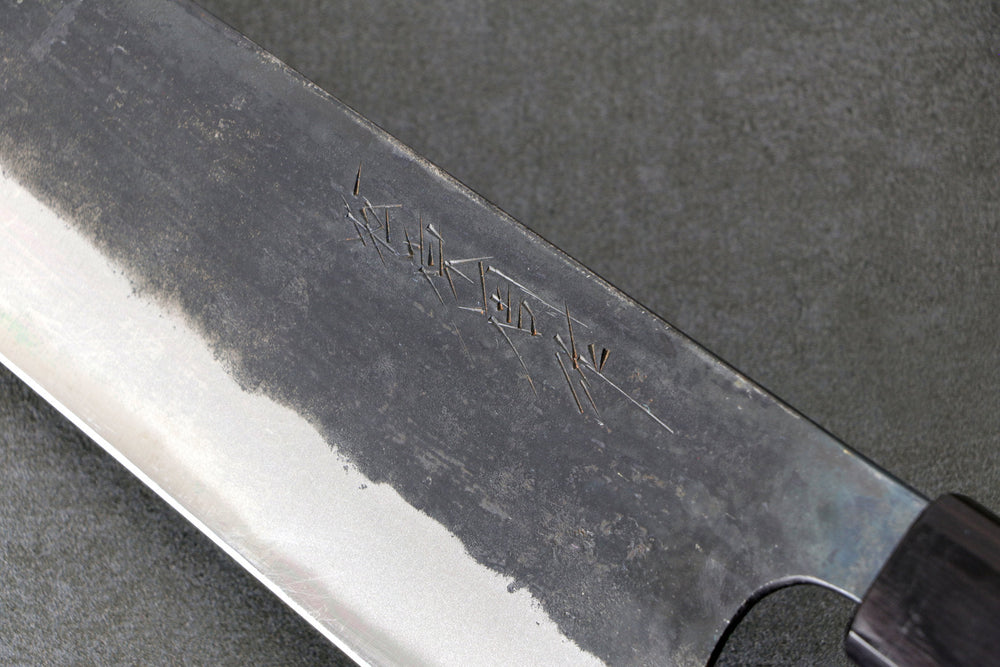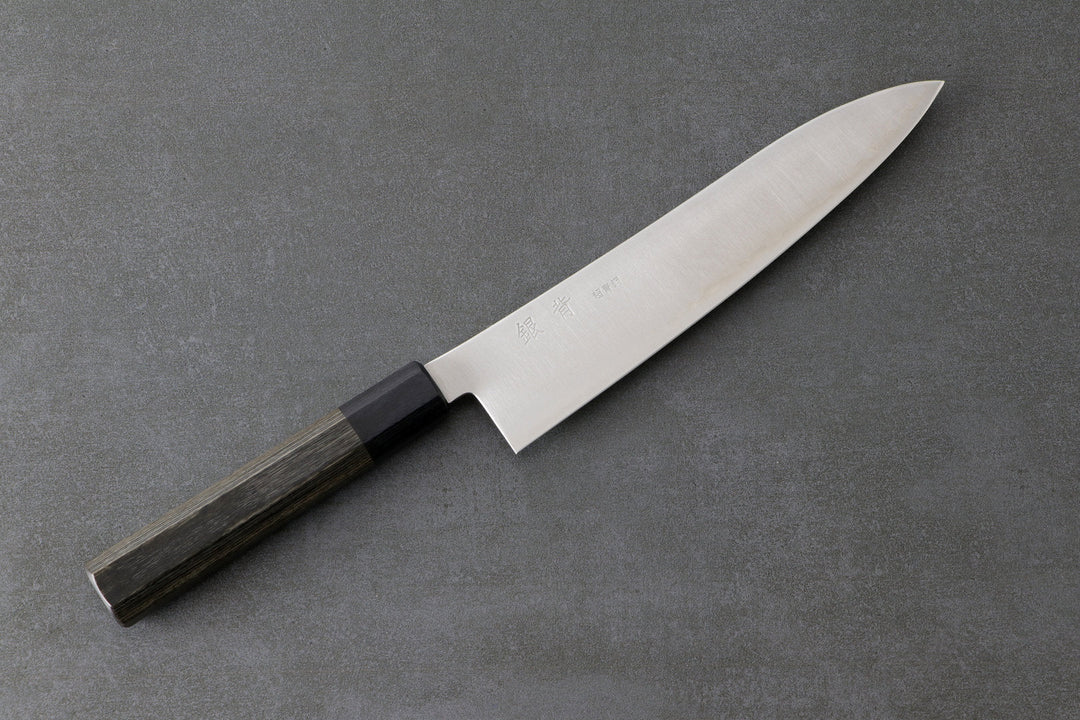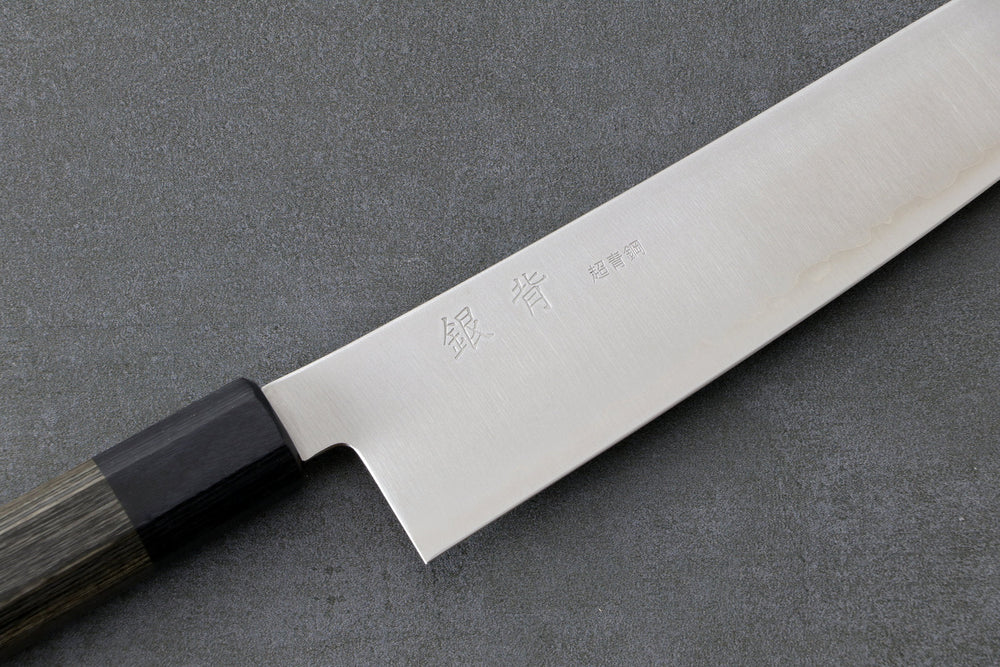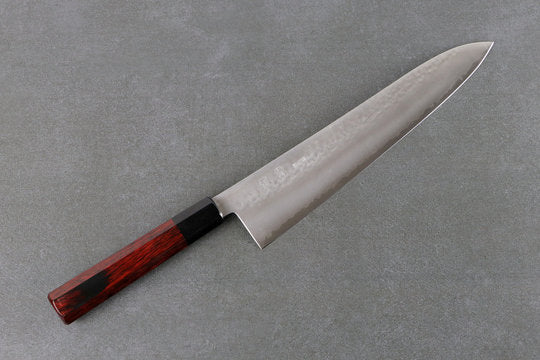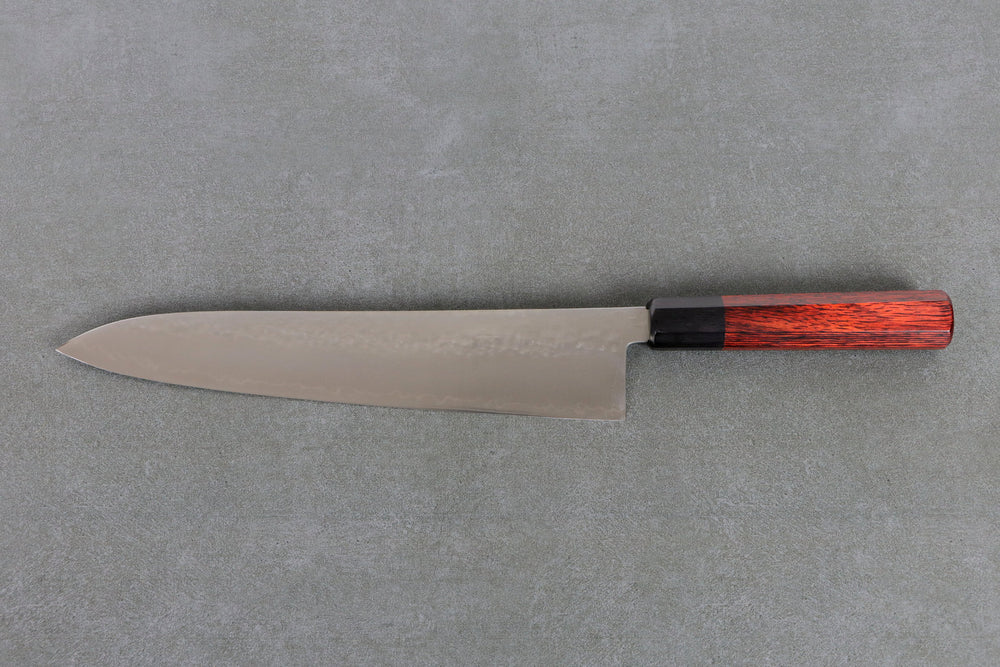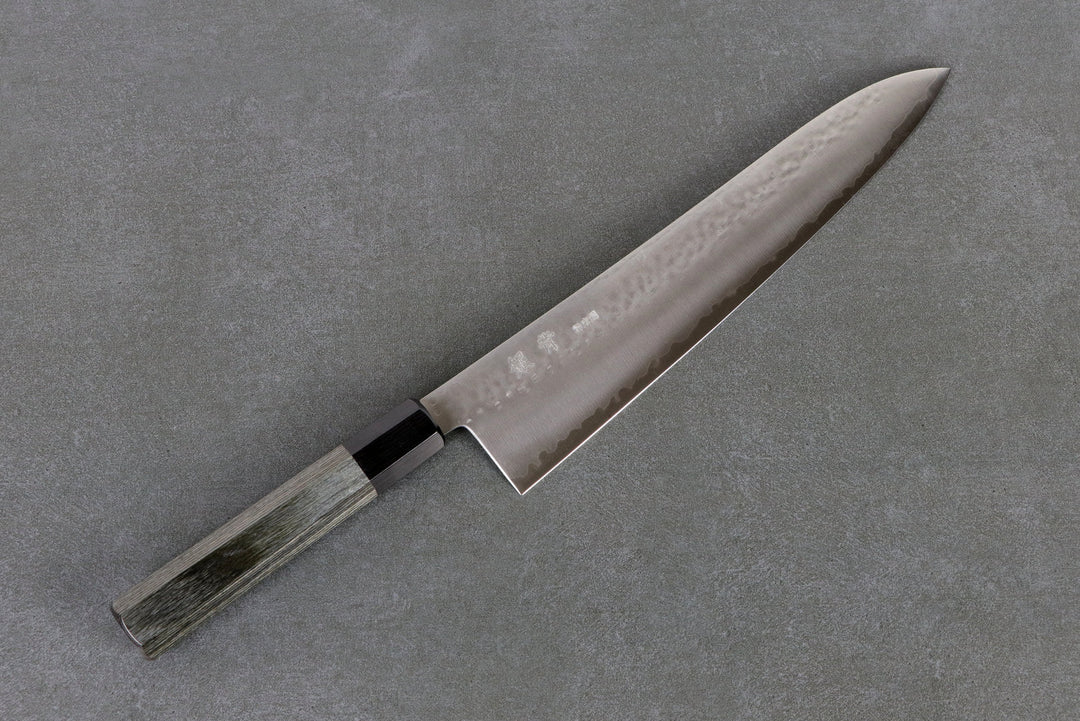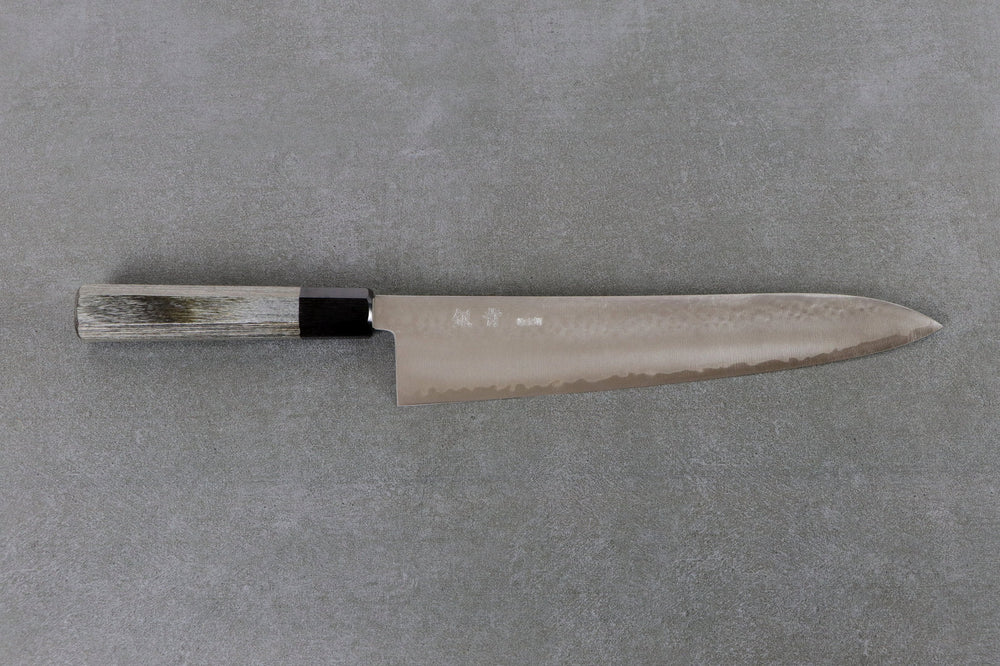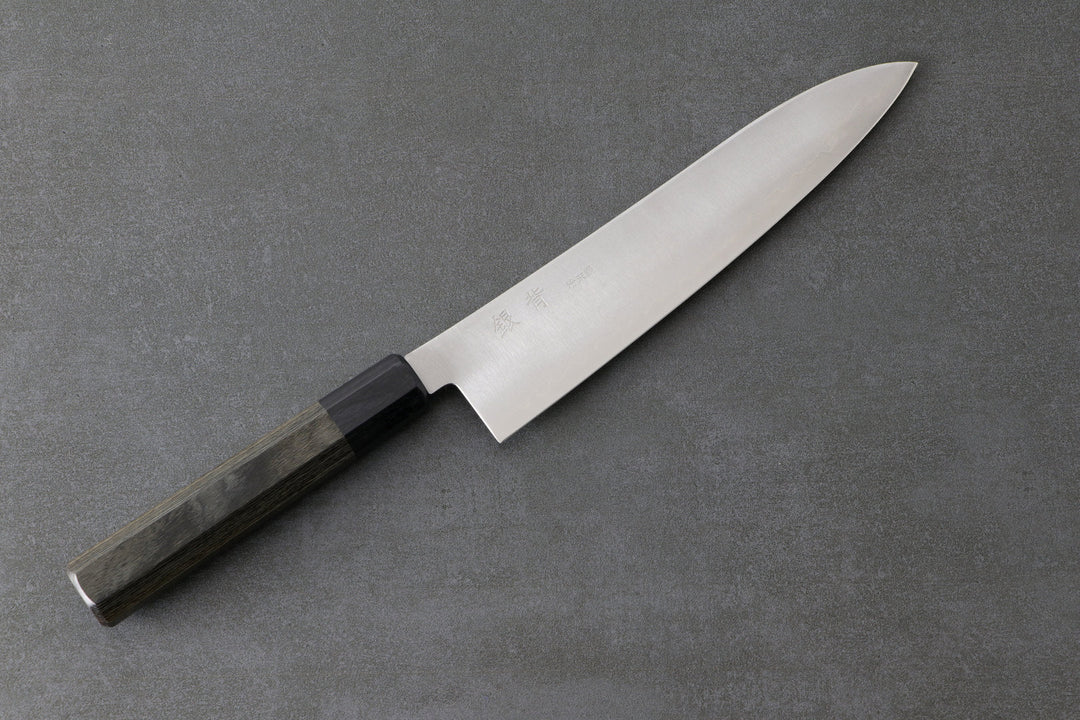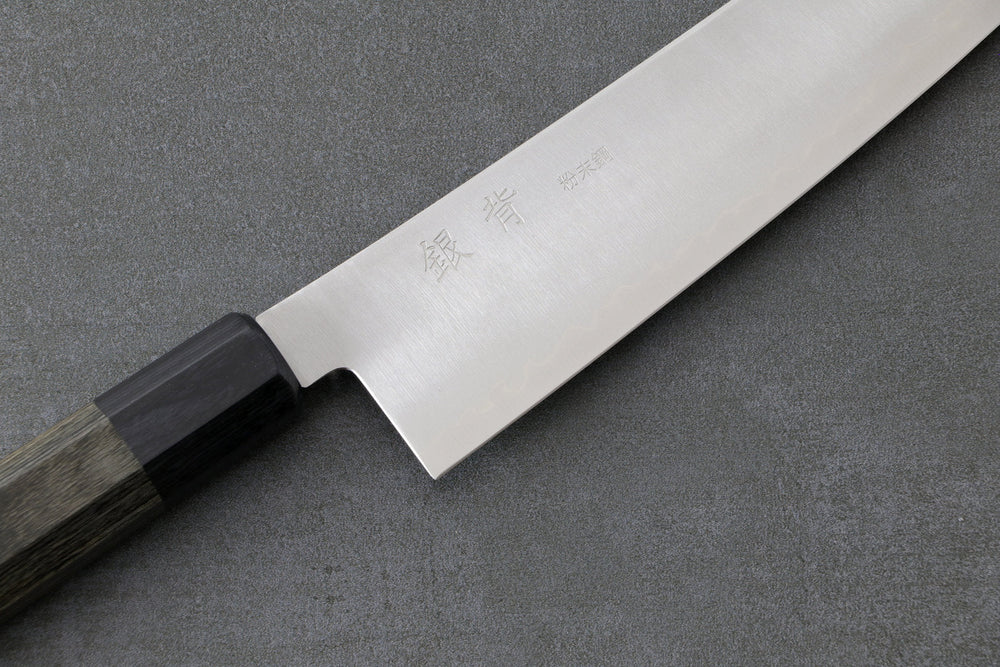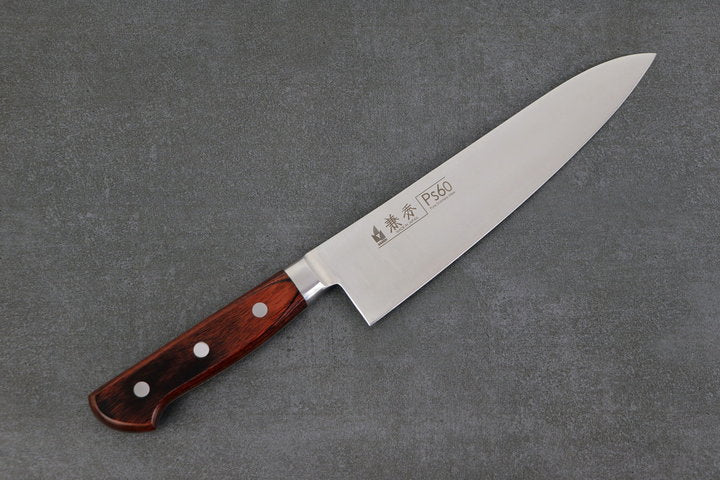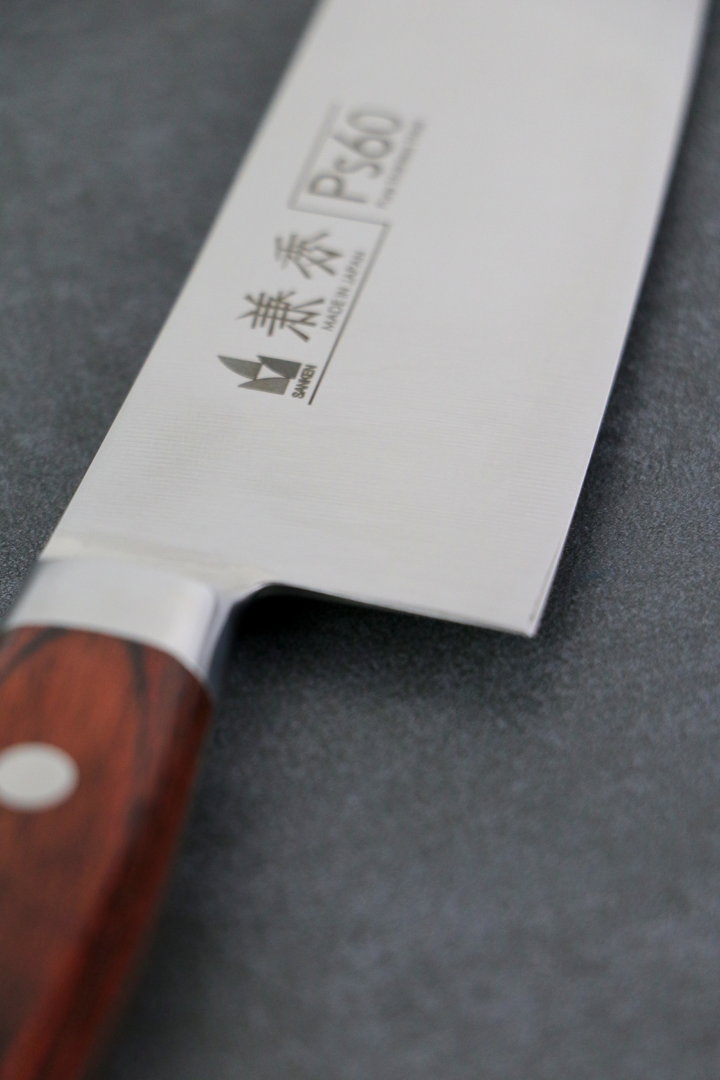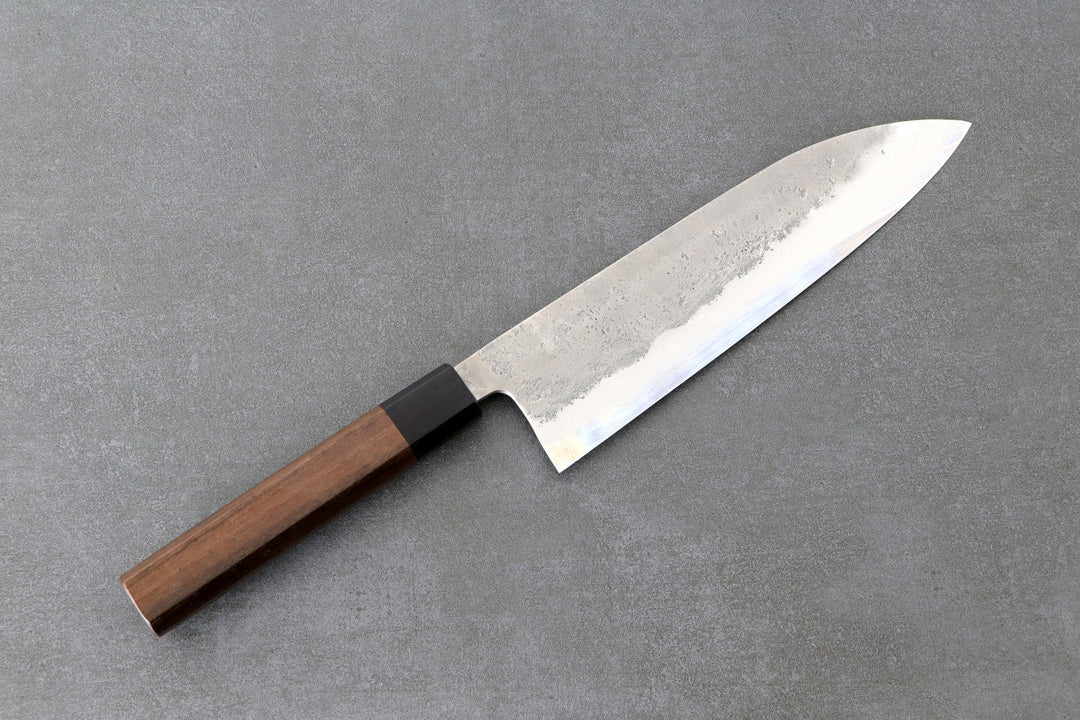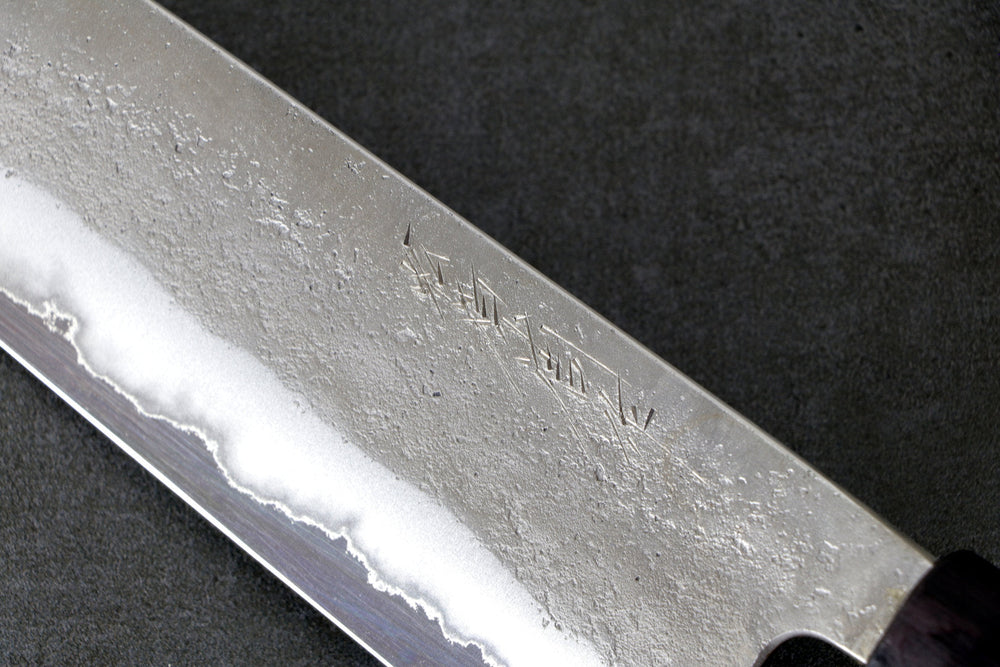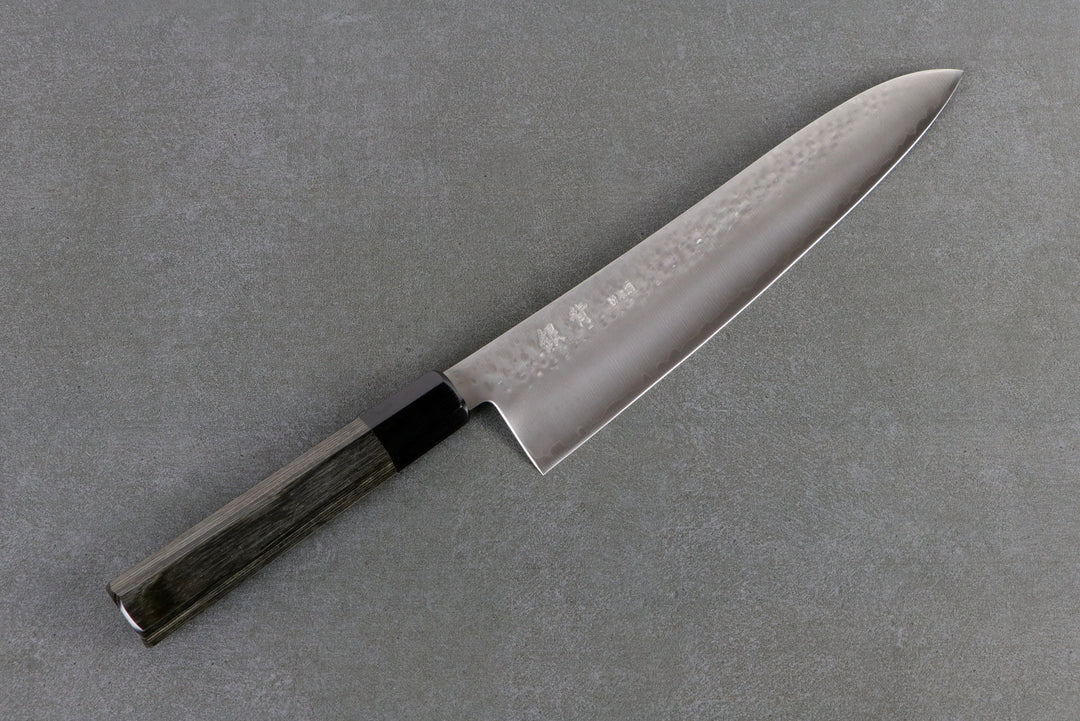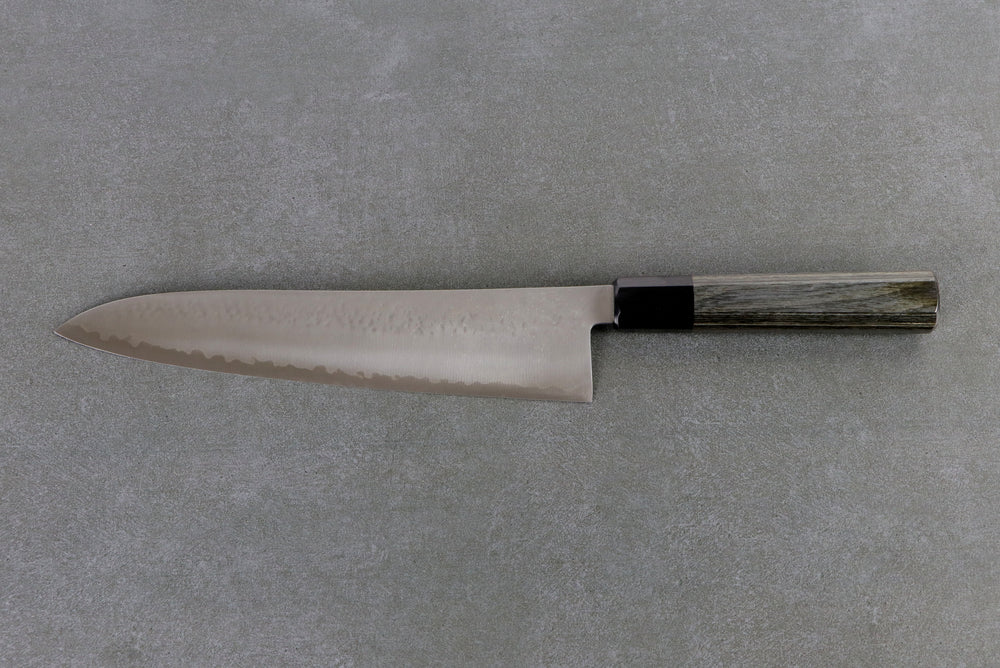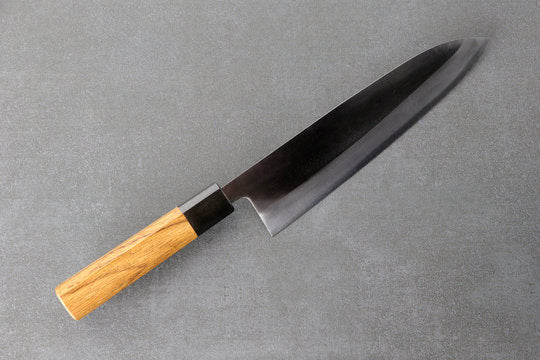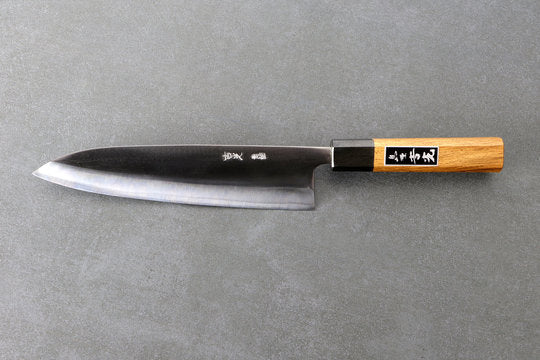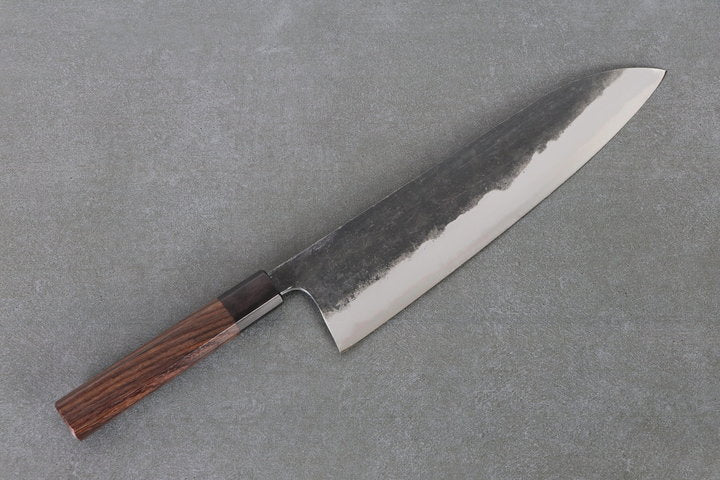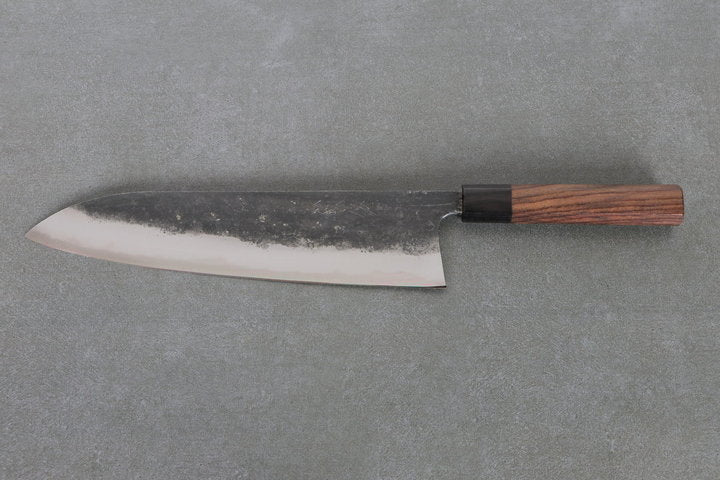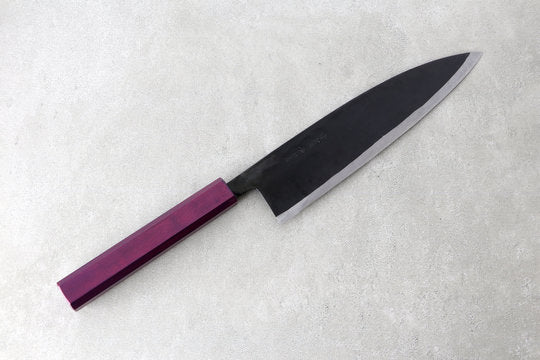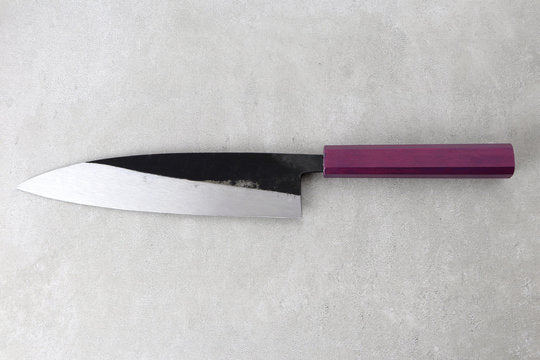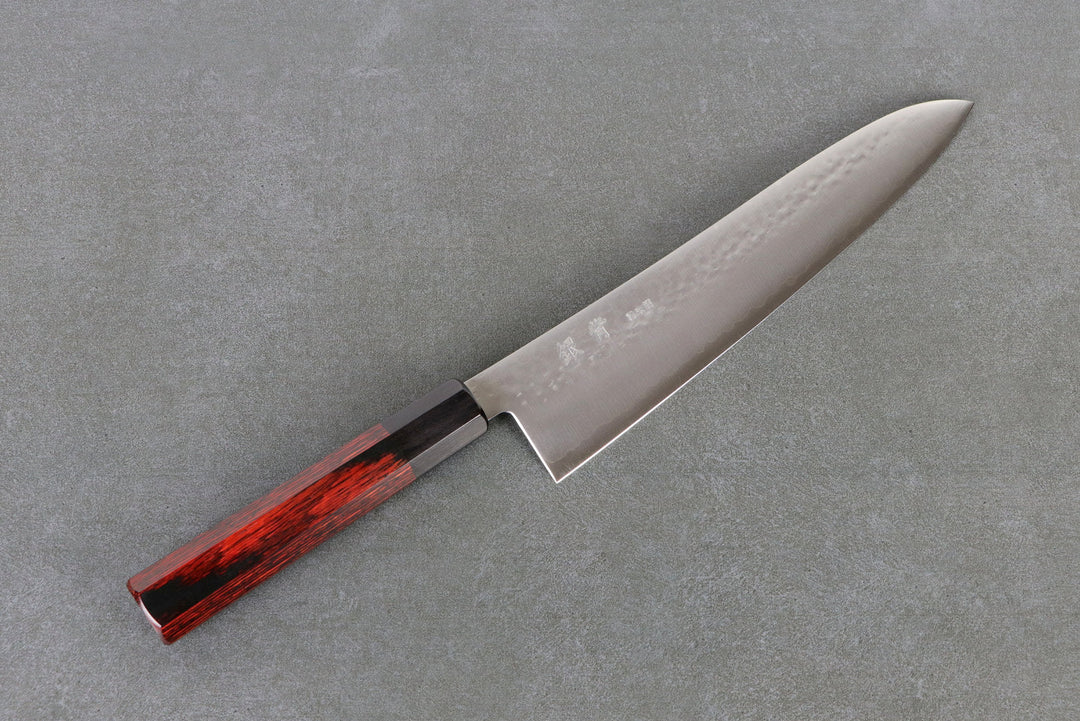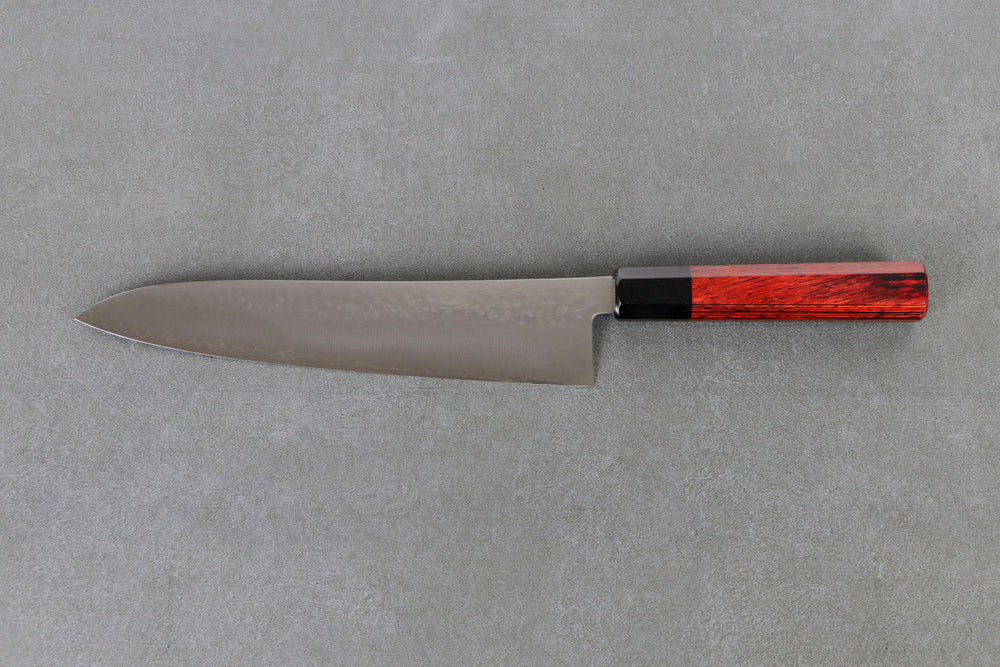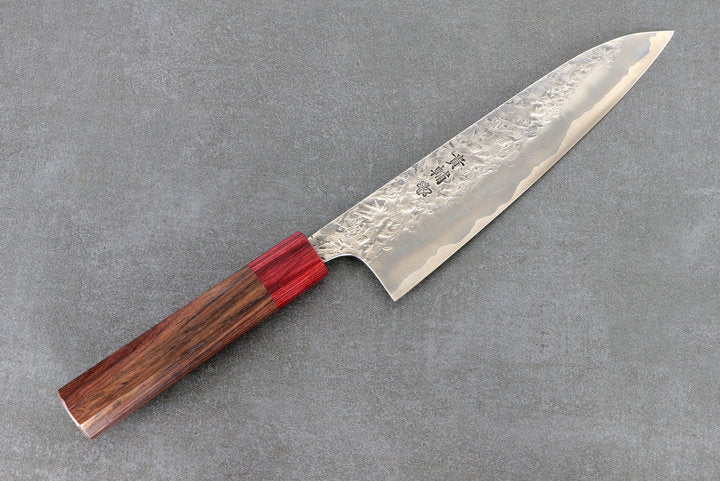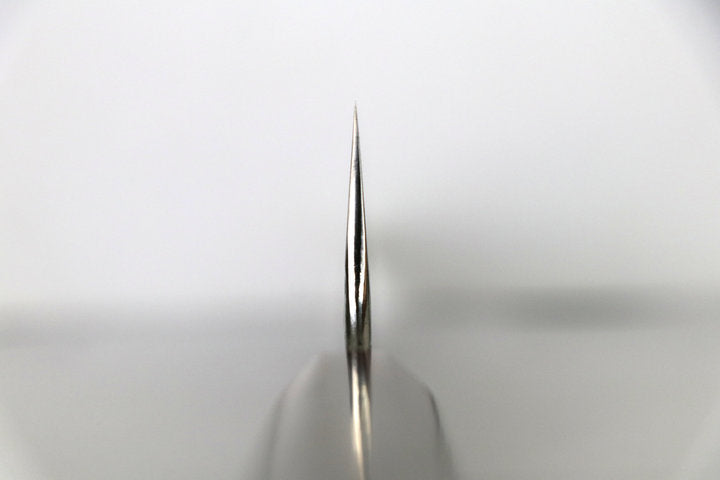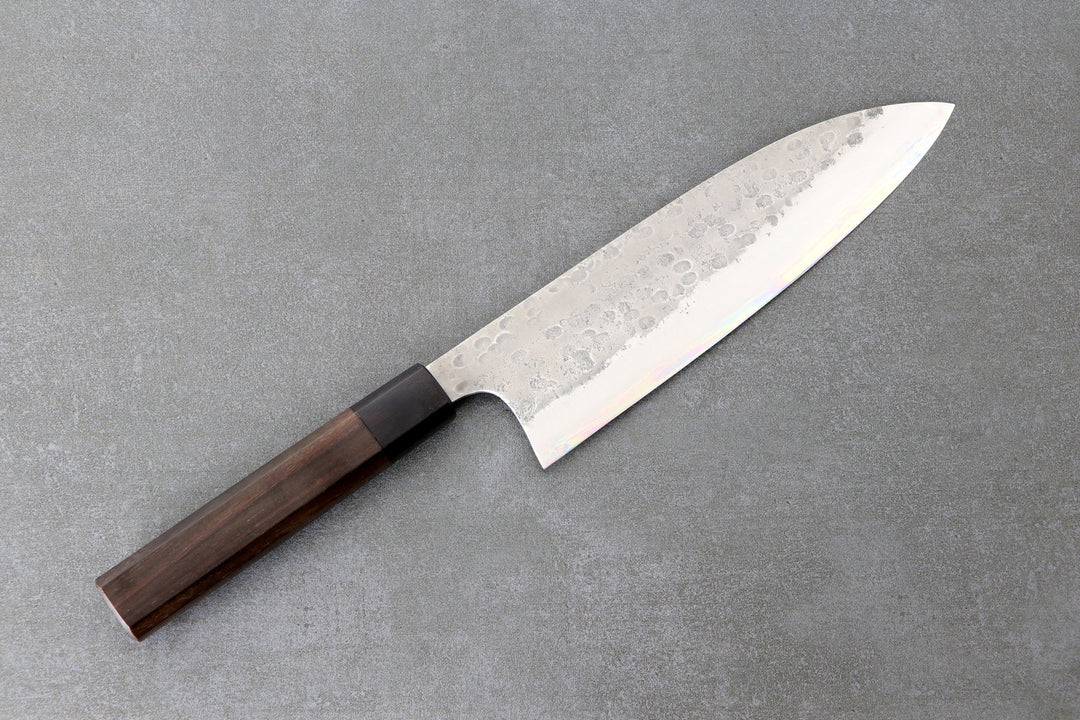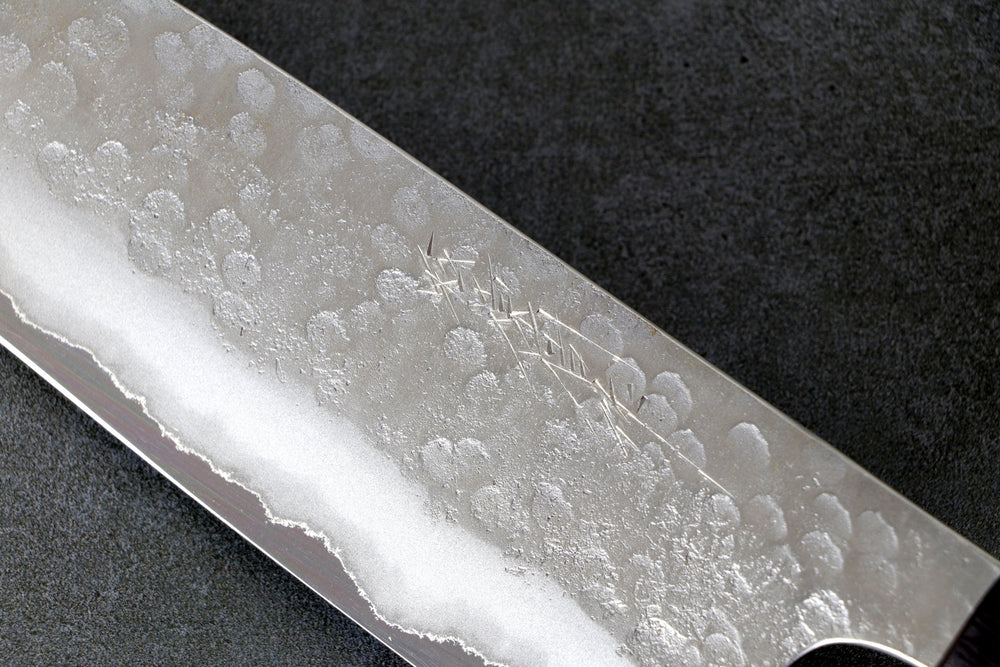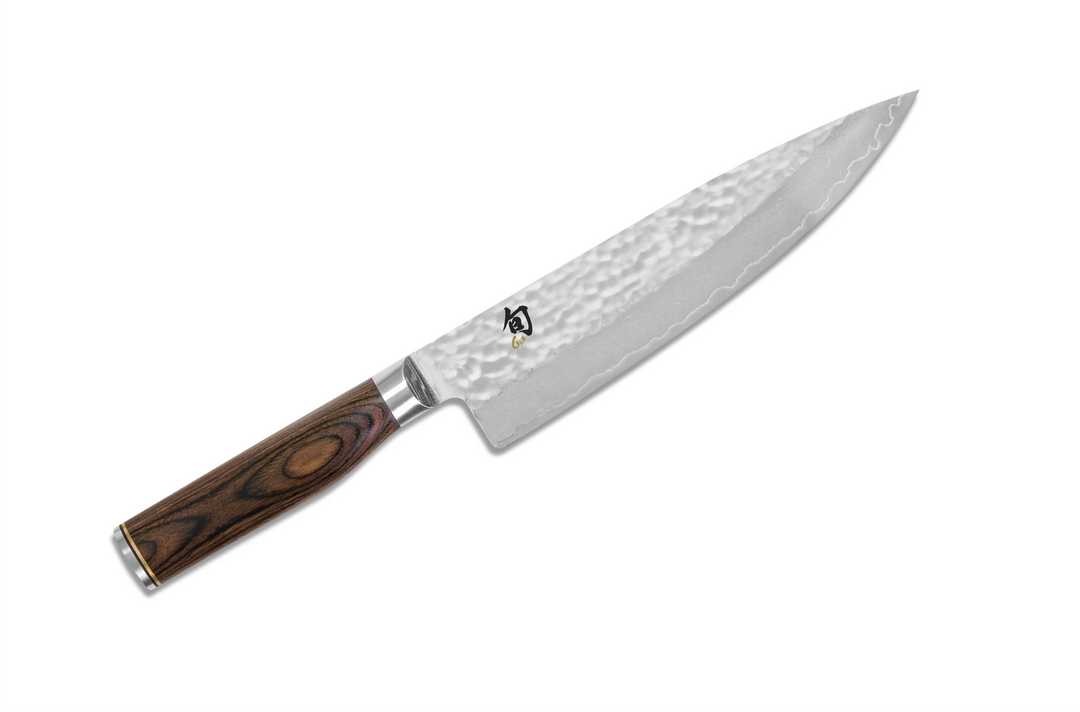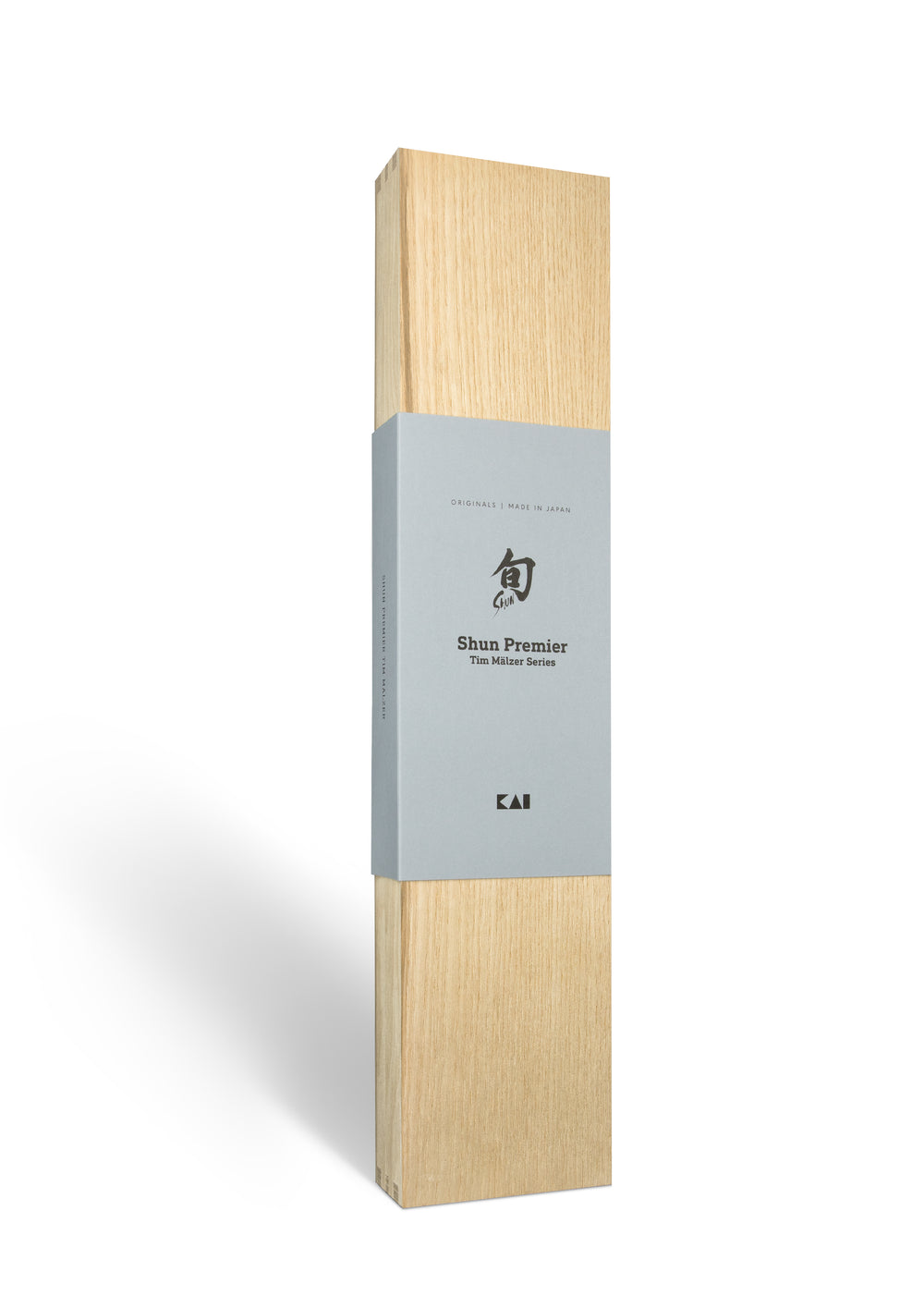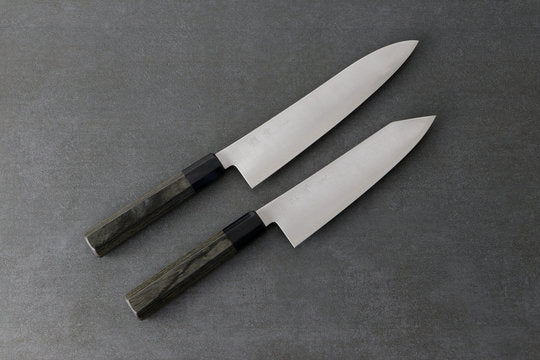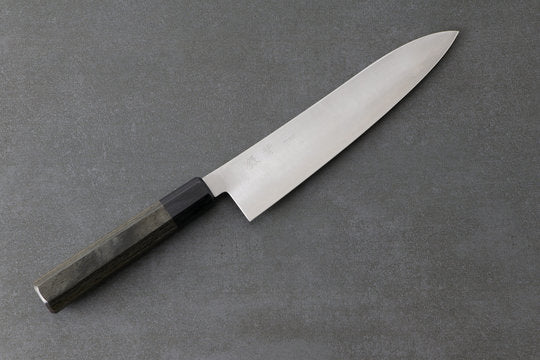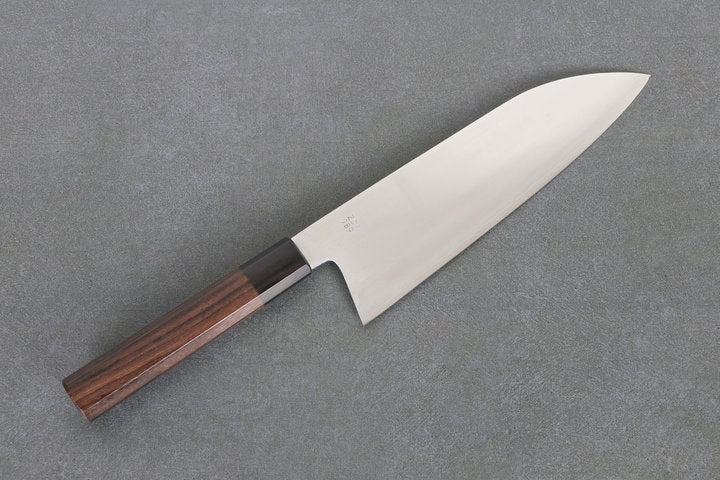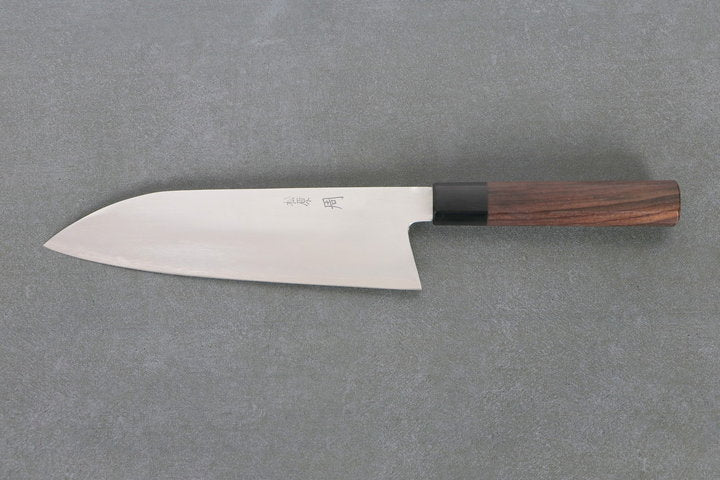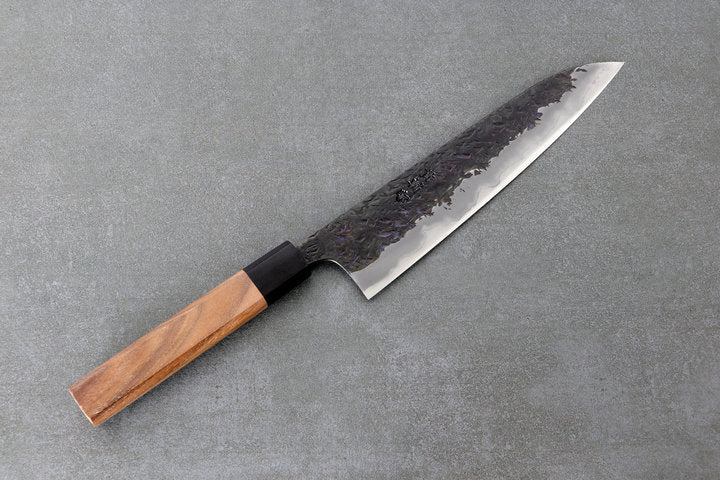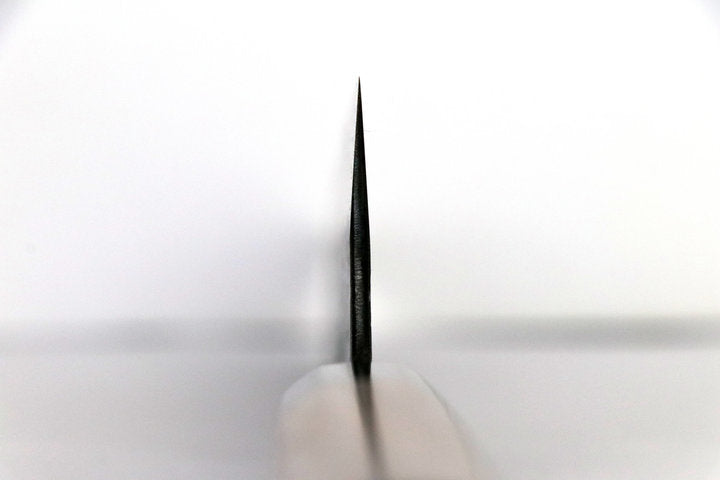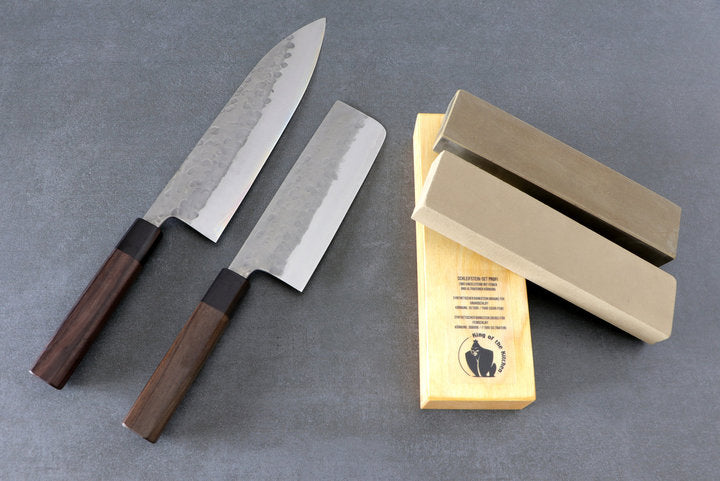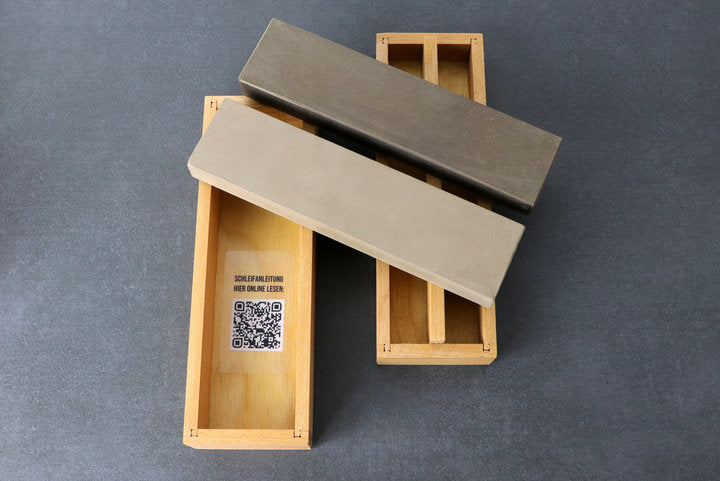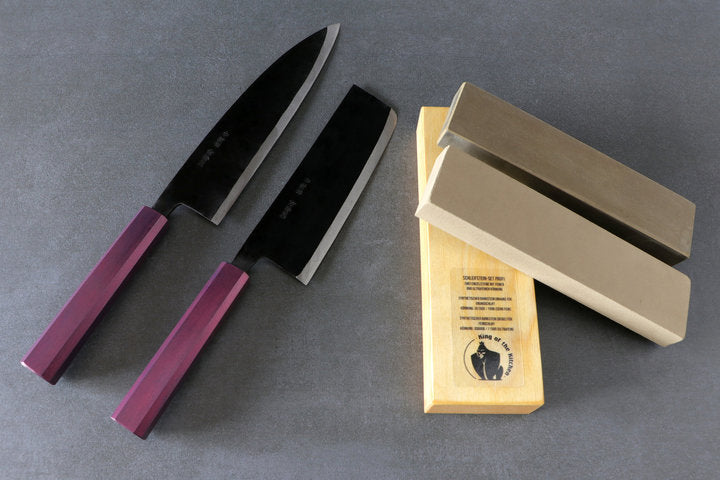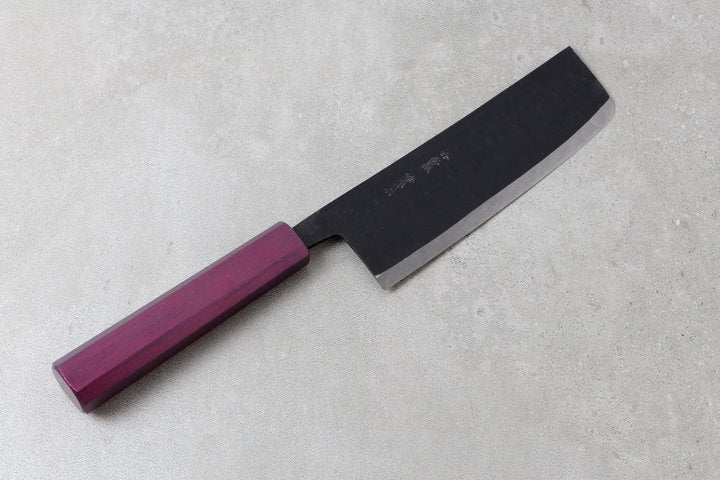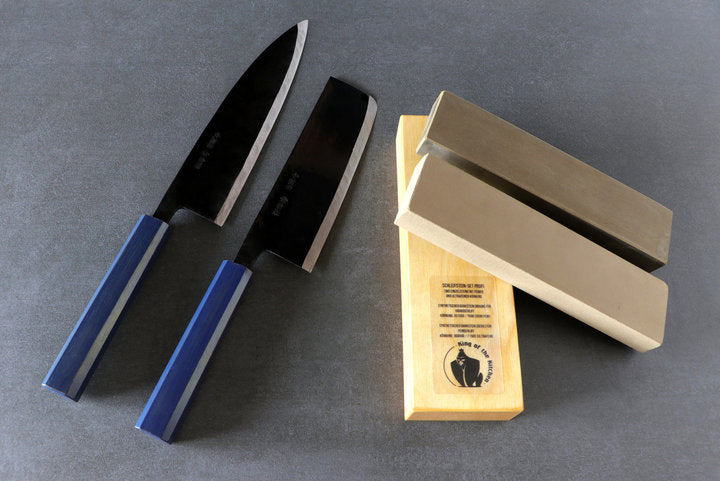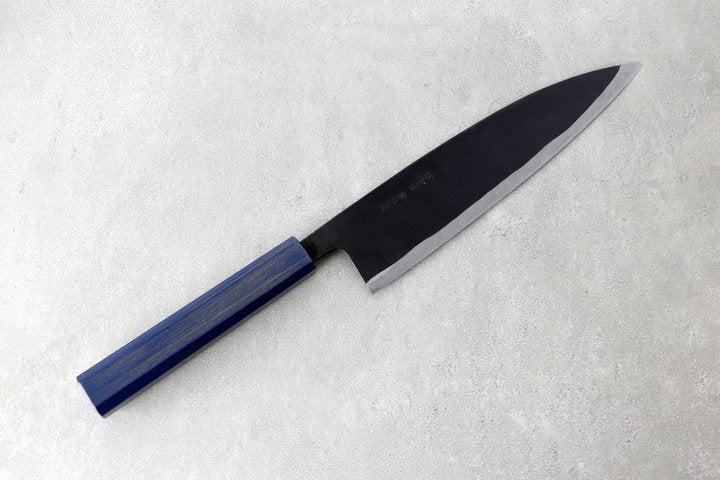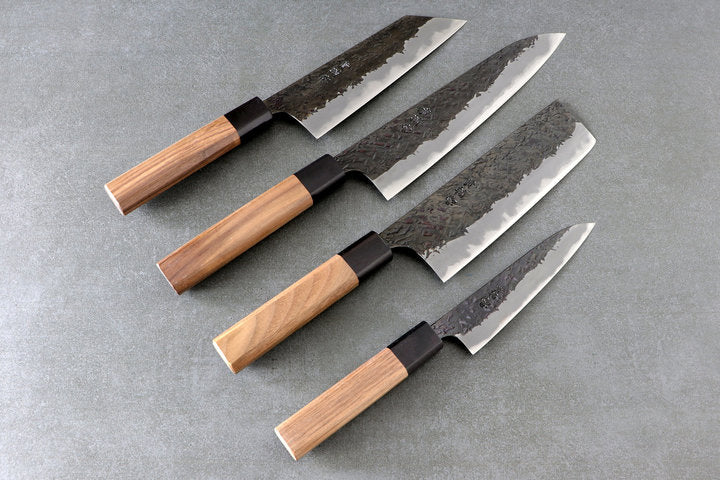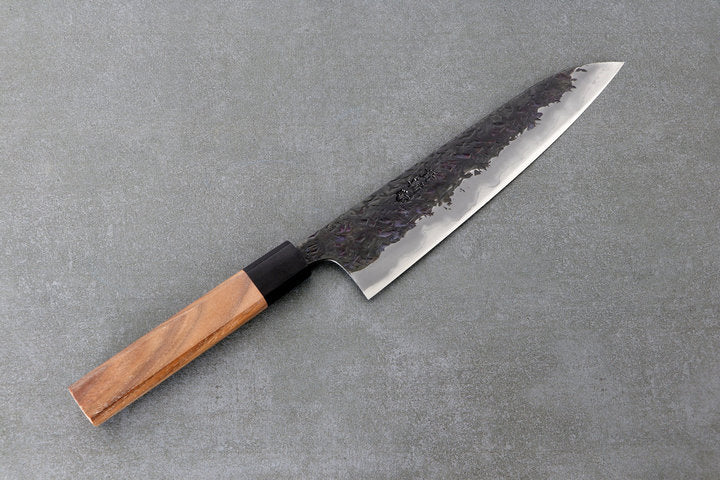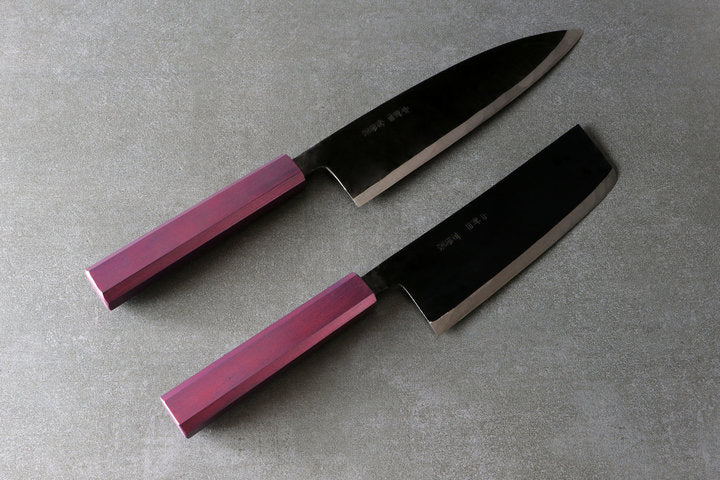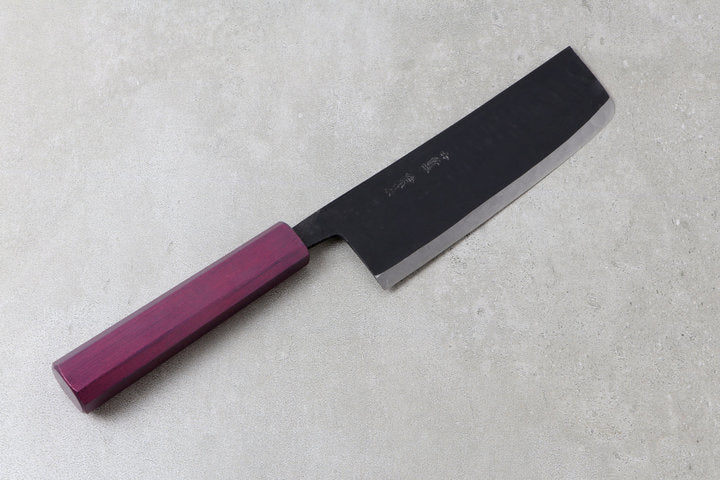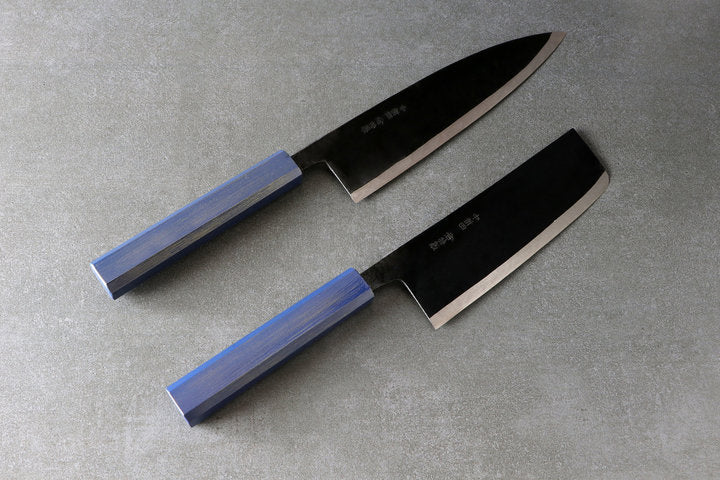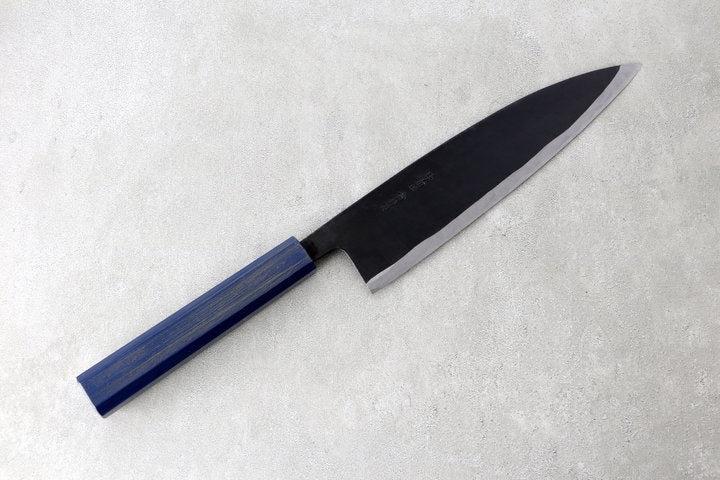
Gyuto knives are the Japanese version of the Western chef's knife. There is therefore a large overlap in terms of the purpose and handling of the knives. Gyutos usually have the following characteristics and features:
- Blade length from 15 cm to 30 cm
- Blade with developed radius and a concise knife point
- Ideal all-purpose knife, suitable for cutting fish and meat as well as peeling vegetables and fruit
- Can be used for various cutting techniques such as the cradle cut or chopping movements
- Cutting edge ground on both sides, therefore suitable for right-handers and left-handers
Japanese Gyuto Knives
Gyuto knives from Japan are versatile Japanese kitchen knives for preparing fish, meat and vegetables. The blade is narrower than that of a santoku knife. Gyuto knives are distinguished from other all-purpose knives by their somewhat wider and often longer blade. The tapered shape of the blades, or the blade shape in general, is similar to that of classic western kitchen knives.
The typical blade length ranges from about 180mm to 300mm and is therefore also ideally suited for larger cuttings. As a rule, Japanese gyuto knives are ground on both sides. However, the shape of the blade and knife says nothing about the hardness.

Gyuto, Gyūtō or Gyutoh - The correct name for Japanese cooking knives
The spelling Gyutoh (牛刀) also exists for this Japanese knife. Both spellings are fine, although Gyutoh is actually the correct form, as Gyuto means "beef" and Gyutoh means "beef knife". As more meat was consumed in Japan, the need for this type of Japanese knife arose. This is also where the striking parallels to the Western chef's knife we know so well come from.
Gyuto chef's knives are all-purpose knives
The gyuto knife can be seen as the Japanese counterpart to the widely used western chef's knife. The blades are variable in use and are therefore popular cooking knives.
The rounded blade makes it possible to roll the knife on the cutting surface. Chopping onions and herbs is also easy with this blade geometry. The pointed blade of the knife makes precise work such as cutting into meat and fish easy. The blade length is usually between 18 cm and 27 cm.
Gyuto chef's knife - also for chopping herbs or onions
Similar to a herb knife, this knife can also be rolled over the cut material from the base of the blade to the tip and thus chop or very finely slice the cut material.
The high blade of the gyuto knife also allows the back of the knife to come into contact with the knuckles when using this cutting technique. This ensures clean blade guidance, which in turn contributes to safety when cutting.

Japanese gyuto chef's knives: the best choice as meat knives
The center of gravity of knives from Japan, which often lies in the direction of the tip of the knife, makes them much more agile to handle compared to Western all-purpose knives and allows for a more precise cut. This Japanese chef's knife usually have a blade length of 180-270 mm.
For normal use, blade lengths up to 240 mm are perfectly adequate, although professional and ambitious hobby chefs also like to reach for the longer versions of this chef's knife. If you compare the shape with the Santoku knife, this Japanese knife may be the slightly better type of knife for meat.
Difference between Gyuto and Santoku knife
The field of application of both types of knives has a large overlap, but there are also clear differences in the blade. To better understand these differences in kitchen knives, you need to take a closer look at the geometries.
The gyuto knife has a longer tapered blade tip and a less high blade than the santoku knife. For cutting meat, this blade or knife tip is advantageous. Also, the cradle cut technique is applicable with the Gyuto kitchen knives as it can be unrolled to the tip while cutting. The Santoku knife with its higher blade has slight advantages when processing vegetables, in terms of blade length and hardness these two types of chef's knives do not necessarily differ.
Which Gyuto to Buy - The Selection Criteria
You should think about the following points to influence your purchase decision. There are countless variations and therefore you need to weigh up what you are actually looking for before buying. Use these points as food for thought:
Gyuto appearance
Should it be a traditional look with wooden handle in Japanese style or rather a chef's knife in classic design? Decisive for the appearance of the knife are the materials used, the blade length and the blade finish.
Knife steel and blade length
How long should the Japanese chef's knife be and what surface is desired. Usually there is a choice between polished surface, hammered (tsuchime) surface, nashiji surface or korouchi surface.
Price gyuto knife
For a small price you usually do not get the best quality. This is also the case with these high-quality chef's knives. However, the price tag alone should not be used as a quality criterion. Unfortunately, there are some suppliers who offer poor quality despite high prices. Here it is important to research carefully or buy from a trusted dealer.
The gyuto knife is a classic Japanese knife with a wooden handle. There are also western handle styles. Which handle is preferred, is ultimately up to the buyer.
Cooking knife Gyuto in comparison
For cuts such as household fish portions or meat portions, one with a blade length of up to 20 cm may be sufficient. A larger blade makes sense for preparing meat in wholesale portions. Variants with blade length from 24 cm are ideal when cutting steaks or even large vegetables, such as pumpkins.
That is why the Gyuto knife is ground on both sides
Ground on both sides, a blade is usually more precise and kitchen knives of this type have a specific task, think of the Yanagiba, Deba or Usuba knife. However, they should be able to cover many tasks. So this type of knife is deliberately sharpened so that vegetables can be prepared by this kitchen knife just as well as fish and meat.
Blade materials for gyutos
In addition to the chosen blade length, the differences can be mainly in the knife steel. For this chef's knife, all common types of steel for the blade can be found on the market. The appearance is determined by the surface finish. Korouchi, Nashiji and Tsuchime are among the classic Japanese surface structures of Japanese knives.
The edge retention and the potential of the sharpness of the depends on the blade steel. The harder it is, the sharper it can be ground. You should sharpen Japanese knives by hand to get the optimum performance. This type of knife is ground on both sides, as it is a chef's knife or all-purpose knife. When cutting produce such as vegetables and fruits, the chef's knife comes into contact with liquids and acid. Therefore, the blade should be cleaned with a cloth after cutting to prevent corrosion of the kitchen knife.
Gyuto made of very hard AOGAMI Super steel
Specimens made of Aogami Super steel have an extreme hardness of up to 65 HRC Rockwell. This makes them ideal meat knives. Our chef's knives with Aogami or Shirogami blade are also ground on both sides. Blade lengths up to 27 cm can be found in our store, with knives with blade lengths of 21 cm being among the most popular.
The Aogami Super blades of the Silverback Knives line have a comparatively low weight. The reason for this is the narrow blade. Lower weight means higher agility when cutting, but the lower weight must be compensated by more kinetic energy.
Correct cutting with the Gyuto chef's knife
The Japanese gyuto is fixed to the handle and with the thumb and forefinger at the area of the back of the blade to the handle. This allows the kitchen knife to be well fixed and at the same time the Japanese knife is then flexible to use for different cutting techniques. Japanese chef's knives with blade lengths from 15 cm are almost all guided in the hand in this way. Depending on the blade length, the chef's knife can then be used for chopping, for cradle cutting or with pulling or pushing movements.
Depending on the knife steel and from about 59 HRC, you should be even more careful not to lever the Japanese blade, as the brittle steel could break out, which is also true for other knives like the Santoku as well. How to cut properly in the kitchen, you can also see in this video:


